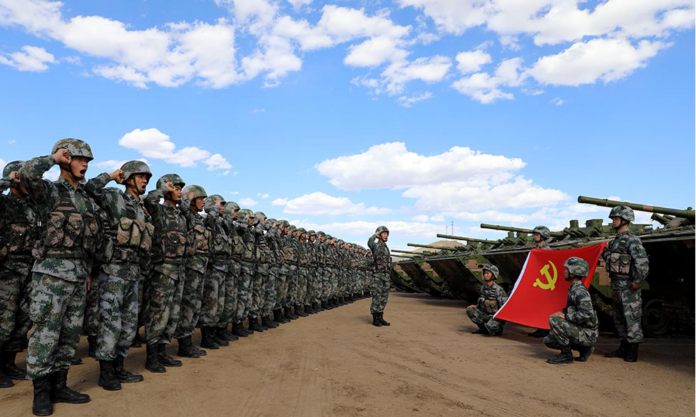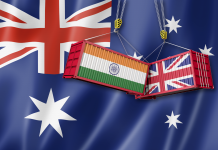By Dr. Sahibzada Muhammad Usman
The U.S. Department of Defense has issued the 2022 Report on Chinese Military and Security Developments, which distorts China’s national defense policy, military strategy and speculates about China’s military expansion. China got offended and opposed to America’s action.
The report’s first significant portion began with the PRC’s national policy to accomplish the great revival of the Chinese state by 2049. The strategy is a relentless pursuit of military, social, and political modernization to grow the PRC’s national strength, improve its administration, and reshape the global order in favor of Beijing’s form of government and national interests. The People’s Republic of China increasingly regards the United States as waging a government-wide effort to control the PRC’s ascent, which impedes its national policy.
China defined strategic competition as a rivalry between solid nations and a conflict of competing for ideological systems. Leaders of the People’s Republic of China believe that structural changes in the global order and a more combative United States are the core reasons for the increased strategic rivalry between the U.S. and China. The strategy comprises intentional and determined attempts to acquire, enhance, and mobilize national power’s internal and external components that will put the PRC in a “leading position” in an ongoing struggle between systems.
The twentieth National Congress of the CCP (Chinese Communist Party) has significant security and military ramifications for the 100th-anniversary goals of the PLA in 2027. The twentieth Party Congress report centered on tightening and expediting the PLA’s modernization objectives in the coming five years and bolstering its strategic deterrent system. Xi Jinping kept his position as chairman of the seven-member Central Military Commission (CMC) and appointed new members who provide political legitimacy, technical competence on military modernization and space concerns, and Taiwan-focused operations experience.
The most overwhelming aspect of this paper is the idea of civil-military fusion. China promotes the Military-Civil Fusion (MCF) Plan to “fuse” its development and security plans in order to construct an incorporated National Strategic System and Capacity in service of its national revival objectives. Beijing’s MCF strategy includes goals to create and acquire sophisticated dual-use tech for military uses and further transform the national defense technological and scientific sectors; it also aims to bolster all of the PRC’s national power instruments.
The MCF development model of the PRC is comprised of different interconnected actions:
- Combines China’s defense industrial capacity and its civilian tech and manufacturing capacity
- Incorporates and utilizes technological and scientific innovations across civilian and military sectors
- Cultivating the skill of blending civil and military knowledge and expertise
- Incorporating military demands into civilian infrastructure and utilizing the civilian building for military uses
- Developing and strengthening China’s national defense mobilization system to cover all key sectors of its economy and society for use in conflict and competition

The second important section is about the Chinese war plan, where Joint Logistic Support Force (JLSF) and Strategic Support Force (SSF) will play a significant role. The SSF is a command-level organization that concentrates the PLA’s strategic information, electronic, cyberspace, and psychological warfare capabilities and tasks. The People’s Liberation Army considers space dominance, the capacity to dominate the space-enabled data field and to deny opponents their own space-based data collecting and communication capabilities, to be essential components of contemporary information warfare. The PLA keeps investing in robotic space exploration and human spaceflight, as well as satellite navigation, satellite communication, space-based reconnaissance, surveillance, and intelligence.
The JLSF provides the PLA with comprehensive joint logistical assistance. It focuses on enhancing joint strategic and campaign-level logistical efficiency through training and integrating civilian goods and services. In addition, the JLSF actively coordinated with civilian organizations to offer logistical assistance in response to the continuing COVID-19 outbreak.
The third significant element describes the strategic collaboration between China and Pakistan. It is hardly unexpected that Pakistan ranks first on the China Index 2022, given that the two countries share an over 600 km border and a long-standing conflict with India. Since the U.S. increased efforts to support India in order to confront China’s rising goals in the Indo-Pacific area, decades-old strategic connections between both countries have strengthened. Pakistan’s proximity to China is partly attributable to Islamabad’s deteriorating relations with the West, particularly during the recent decade. Beijing also wields soft power via projects like Confucius Centers, which teach Chinese culture and language, and by supporting think tanks and grants to attract Pakistani society.
China positions Pakistan as its sole all-weather strategic ally, Russia as it’s only good partner with cohesion relations and other nations such as Brazil as strategic partnership links.
Pakistan and China inked a new agreement to launch the second phase of the $60 billion as CPEC reached its second phase, focusing mainly on the development and industrialization Special Economic Zones (SEZs). According to a study from the U.S.-based international lab AidData, a significant portion of Chinese development finance under the CPEC comprises loans with commercial interest rates.
The CSIC (China Shipbuilding Industry Corporation) has formally announced for the first time a project to deploy eight modernized diesel-electric assault submarines to the Pakistan Navy. Hu Wenming, chairman of CSIC, acknowledged the agreement at a news conference. The disclosure follows a similar comment made by the chief of the Pakistan Navy’s next-generation submarine program before the Standing Committee on Defense of the Pakistan National Assembly. Additionally, Hu Wenming said that the CSIC would establish a training facility in Karachi. It is unknown if both sides have signed a contract and the actual cost of the Pakistan Navy’s submarine procurement program. The anticipated overall cost is from $4 to $5 billion. Beijing is anticipated to provide Islamabad with low-interest, long-term credit. The first four submarines will be provided by the end of 2023, while the last four will be built in Karachi by 2028. However, Hu Wenming did not specify the sort of submarine that would be delivered to the Pakistan Navy.
Suggestions:
PRC is one of Pakistan’s largest sources of economic and military assistance; thus, Pakistan may expand its connections with China in various areas. This sort of support from a large country is significant for Islamabad, which has few strong allies, particularly since its ties with the United States have waned in recent years.
As China has accomplished fast growth and is becoming more assertive, Pakistan may benefit from the Chinese experience for economic development and stability. Utilizing the country’s advantageous position and long-standing alliance with China, Pakistan may realize its economic success and growth vision.
Pakistan must enhance its governance. Few Pakistani officials realize the significance of decentralization of power and local governments’ empowerment in China’s success narrative, despite widespread praise for China’s form of administration.
About Author:
Dr. Sahibzada Muhammad Usman
Research Scholar and Academic; Assistant Professor in the Department of Strategic Studies at Air University, Islamabad, Pakistan. Ph.D. in Political Science at the University of Pisa, Italy. Dr Usman has participated in various national and international conferences and published 30 research articles in international journals.






